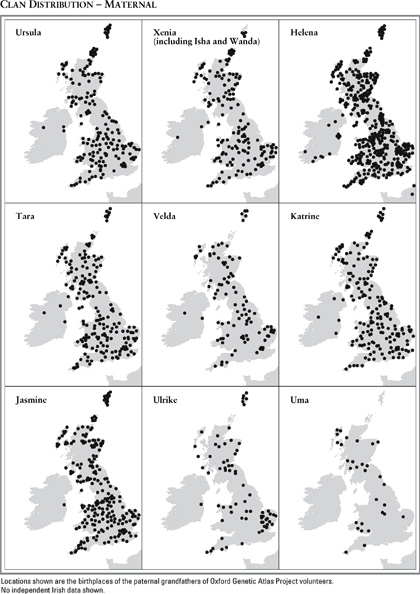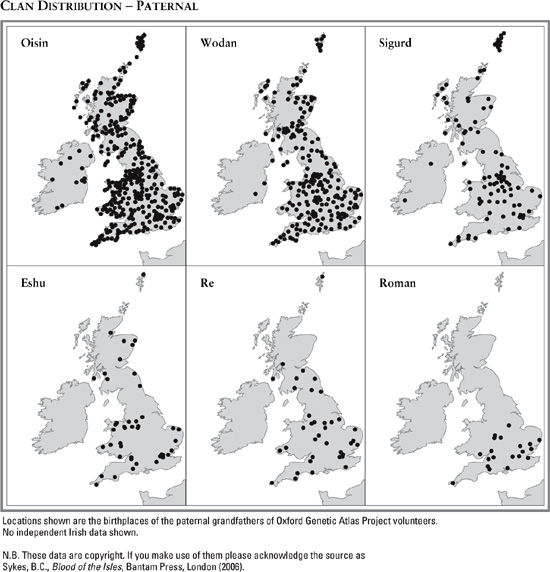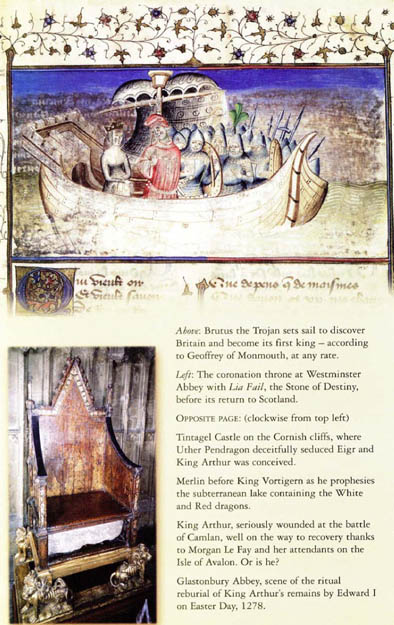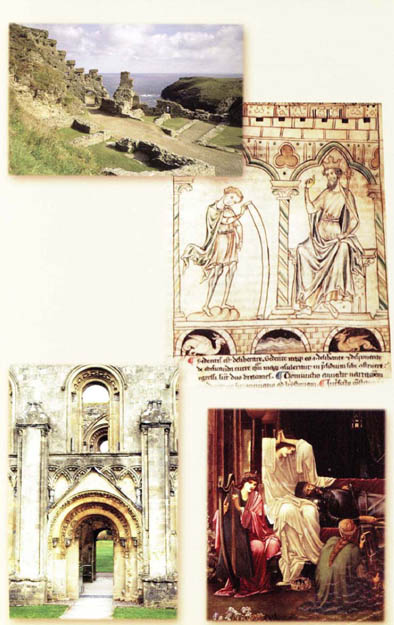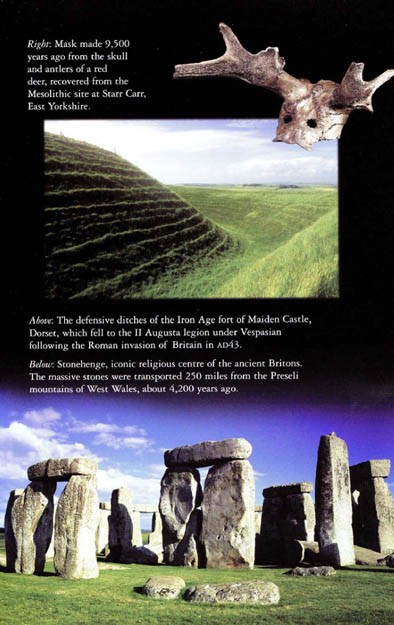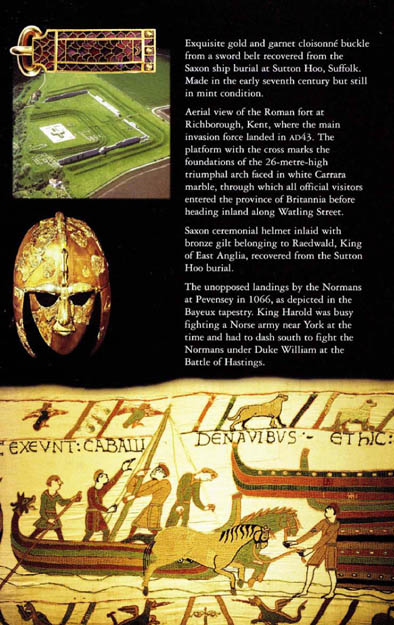Blood of the Isles (35 page)
Read Blood of the Isles Online
Authors: Bryan Sykes

From this evidence the succession of Saxon/Danish invasions during the turbulent centuries after the Romans departed did leave a mark on the stubbornly Celtic indigenous bedrock of parts of England. It is a real presence, but it is by no means completely overwhelming. The gory chronicles of Gildas do contain a grain of truth. The roughly twofold excess of Saxon/Danish Y-chromosomes compared to their maternal counterparts hints at a partially male-driven settlement with some elimination or displacement of the indigenous males. But the slaughter, if slaughter there was, was not total and still there are far more people with Celtic ancestry in England, even in the far east, than can claim to be of Saxon or Danish descent.
I have tried to find Roman Y-chromosomes, but they left very few traces that I can be sure were theirs. Only one very rare patrilineal clan, without even a name, may be the faint
echo of the first legions. It is found in southern Europe, including Italy. What makes me think, as well as this link to Italy, that it might be linked to the Romans is that it is entirely restricted to England. There are no traces beyond the borders with Wales or Scotland. There may be others, but as was pointed out, the tradition of recruiting legionaries and auxiliaries from Gaul and other parts of the Empire, as well as from Britannia itself, makes them very difficult to spot among the descendants of later arrivals from the same areas. But true Roman genes are very rare in the Isles.
Overall, the genetic structure of the Isles is stubbornly Celtic, if by that we mean descent from people who were here before the Romans and who spoke a Celtic language. We are an ancient people, and though the Isles have been the target of invasion and opposed settlement from abroad ever since Julius Caesar first stepped on to the shingle shores of Kent, these have barely scratched the topsoil of our deep-rooted ancestry. However we may feel about ourselves and about each other, we are genetically rooted in a Celtic past. The Irish, the Welsh and the Scots know this, but the English sometimes think otherwise. But, just a little way beneath the surface, the strands of ancestry weave us all together as the children of a common past.
This genetic history has been read mainly from the surviving genes passed on by generations of ancestors who lived through the events described in
Blood of the Isles
and whose descendants carry them today. It is a new history, reconstructed from thousands of fragments from the past. The general conclusions in this and other chapters have
been distilled from the DNA of hundreds of people from each region of the Isles. But to the people concerned, and to everyone else in the Isles, it is our own genetic ancestry that is the most important. It is the thread that goes back to our own deep roots that means the most. The proportions of one clan or another are vital and the detailed genetic comparisons are essential for arriving at any sort of general conclusion, but it is our own ancestry that understandably, and quite rightly, holds the most interest. Now that we know what the overall patterns mean and now that we can identify with confidence surviving DNA with the different ancestral signatures, it is open to anyone to find their place in this amazing story. For this is not the history told by fading manuscripts in dimly lit libraries, or by rusting weapons in glass cases. It is a living history, told by the real survivors of the times: the DNA that still lives within our bodies. This really is the history of the people, by the people.
Within this appendix I have compressed just a small fraction of the genetic data from the Oxford Genetic Atlas Project that forms the foundation for
Blood of the Isles
. More details appear at
www.bloodoftheisles.net
.




